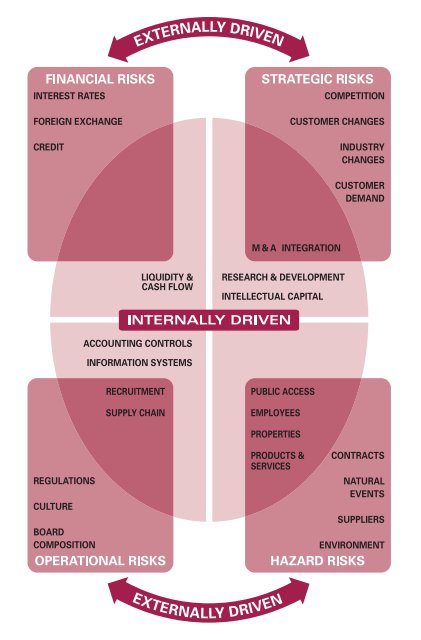In healthcare, financial risks can be caused by everything from faulty equipment to malpractice lawsuits. Finance leaders need models that can help them minimize this risk and advance value-based care goals.
We analyzed a large sample of hospital-insurer contracts characterized by their payment method in relation to the allocation of financial risk. We found that contracts with global budgets shifted financial risk toward hospitals, but this effect was weakened by increasing use of cost-mitigating measures.
1. Upside-risk models
As the industry transitions from volume-based payment models to value-based reimbursement, healthcare payers and providers will need to reimagine care delivery to achieve success. To help them do so, it is vital to understand the different types of risk that healthcare organizations can assume under these new models. These include upside risk, downside risk, and models that combine both. Upside-risk models reward providers who are able to treat patients below an agreed-upon cost threshold. However, if costs are above this threshold, the provider will not be financially penalized. Examples of these types of models include comprehensive care payment and bundled payments models.
These types of models allow healthcare providers to earn shared savings that they would not be eligible for under a fee-for-service contract. In addition, these models give providers the opportunity to earn more incentives over time as they continue to improve patient outcomes and reduce costs.
However, downside-risk models compel providers to hold themselves accountable for their performance by requiring them to refund healthcare revenue if costs exceed an agreed-upon budget. This type of model is more challenging and requires providers to embrace practice transformation strategies, population health management techniques, and telehealth programs to drive down costs and improve patient outcomes. In addition, payers are promoting more downside-risk alternative payment models through their Medicare Shared Savings Program and Enhanced Accountable Care Organization (EACO) tracks.
2. Downside-risk models
The healthcare landscape is shifting toward risk-based payment models. Those that succeed at risk-based contracting are taking steps closer to the Quadruple Aim, delivering remarkable patient outcomes and satisfaction, and reducing costs. However, moving beyond upside-only risks requires a new type of insight.
Downside risk enables providers to share in the profits of keeping medical costs below an agreed-on budget, but they’re responsible for the losses incurred above that figure. The use of downside-risk models—which also include capitation and delegation—has grown significantly since 2012, compared to the comparatively slow adoption of one-sided, upside-only risk contracts. CMS has been using policy levers to push the industry toward downside risk faster, including with bundled payments and the Medicare REACH model.
In a bundled payment model, an entity (physician group, hospital, etc.) receives a set amount for a specific episode of care or period of time, such as a knee replacement or chemotherapy for low-risk cancer. If they can keep cost and clinical targets below a complementary financial target, they get to keep the profits.
This type of risk is less common in the commercial market, but is growing as payers encourage alternative payment models with downside risk. As such, healthcare CFOs should understand the risks involved and prepare to mitigate them with the right analytics and strategic partnerships.
3. Alternative payment models
In alternative payment models (APMs), healthcare providers take on risk by agreeing to be paid for their quality of care and services based on performance, rather than on the volume of procedures performed. This allows them to focus more on improving quality and lowering costs, while also giving patients more choice and control of their health care. APMs include Accountable Care Organisations, Patient-Centered Medical Homes and bundled payments for specific conditions or procedures.
The panel discussion brought to light the multi-dimensional risks that impact the bottom line of healthcare organisations. The panelists, Yogesh Patel, CFO, HCG Group (moderator), Dinesh Mittal, CA & Financial Expert, Cloudnine Hospitals, Dilpreet Brar, CEO & MD, medCUBE, Sumit Agrawal, VP Finance, Cloudnine Hospitals and Ravi Bhandari, Strategy Consultant – Healthcare Services & Ex-CEO, Shalby Hospitals highlighted the need for organisations to be fearless in taking on risk.
A recent study examined the link between healthcare utilisation patterns and the choice of medical institutions by individuals with chronic diseases. It found that family health financial risk and the type of medical insurance scheme (New Rural Cooperative Medical Insurance, Urban Employee Basic Medical Insurance, or Gong Fei Medical Insurance) were linked to healthcare utilisation decisions. Patients with low family financial risk and NCMS insurance coverage chose community healthcare more often than those at high financial risk, while those with UEBMI and GFMI insurance utilised hospitals more frequently.
4. Financial penalties
Financial risk protection, which ensures that people can consume needed quality healthcare services without incurring financial hardship, is one of the critical components of universal health coverage (UHC)—a key target for the sustainable development goals. But financial risk protection can be difficult to achieve, particularly in countries with limited revenue and budgetary resources. Even very large healthcare providers and commissioners can accumulate huge debt simply due to chance variation in volume and case mix.
The Anderson theoretical model suggests that family health financial risk interacts with healthcare utilisation in the choice of medical service, for example, the selection between primary and secondary or tertiary hospital care. However, recent studies using multinomial logistic regressions suggest that financial risk is not among the most important determinants of this behaviour. The capability of primary healthcare institutions and the medical insurance scheme appear to be more important.
Another type of financial risk is credit risk, which refers to a healthcare organization’s ability to meet its short-term obligations through its liquid assets. This can be caused by a wide range of factors, including the COVID-19 pandemic, changes in healthcare regulations, or economic and industry trends. In addition to assessing credit risk, it is important for healthcare organizations to understand and prepare for emerging risks. This will help them avoid the costly consequences of being unprepared for new risks.





